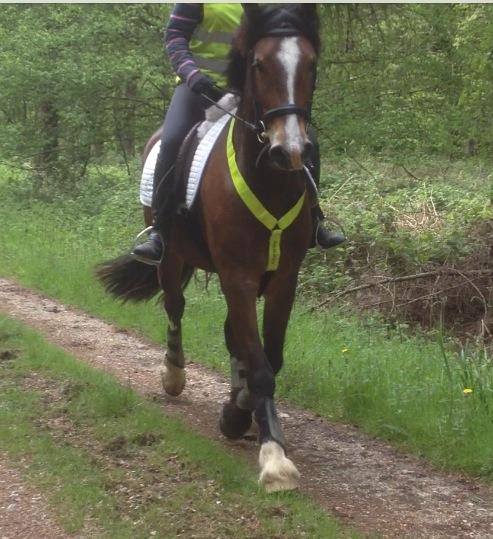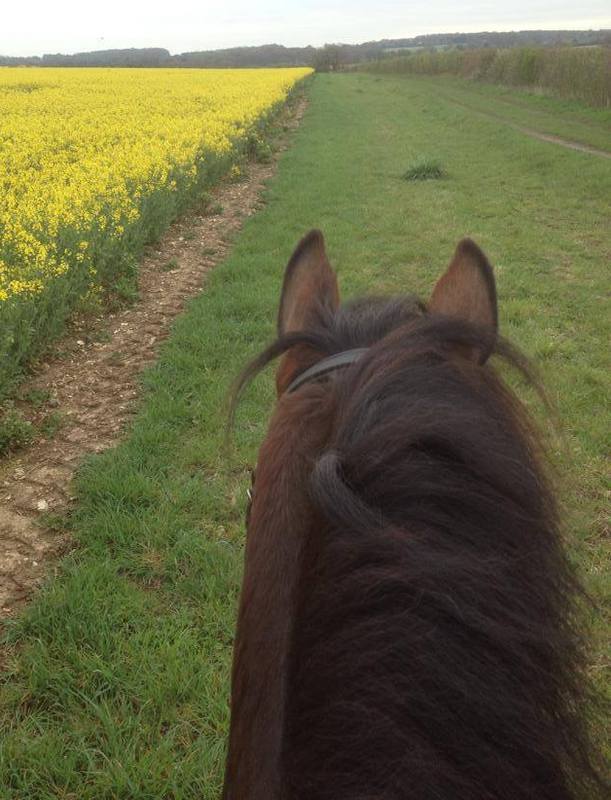Hacking and Training....
Posted on
Hacking, a fantastic way to build on your training, as Rocky proves....
Yesterday I had the first chance to ride Rocky since his hack on Saturday, a few days off and he was really looking for something to do, he is so not good at doing nothing!
So, tack on, and off to the school. I mounted up and away we went but the school is so wet that I had to rethink my plan!
As I have a separate section in my field, we went in there to school instead. We never work in “his” field as that is Rocky’s area to be himself. This is not too bad an idea really, gets us away from the edge of the school, makes ME focus on being accurate, there is no fence for Rocky to “lean on” and therefore has to listen and focus on me and my aids.
As this is the first time I have ridden Rocky in the field (we have lunged, long reigned etc), it was a great opportunity to check his reactions to my aids as there are no markers etc, so he can’t anticipate doing “X” at “X” and “Y” at “Y”, if you get my drift.
As we have done over a week hacking, but always working properly, this has encouraged Rocky to be more forward and in front of my leg, really pushing - NOT LEANING, into his bridle, opening up his topline and lengthening his frame. All this hacking has paid dividends. The field work proved this as I was able to ride him straight and keep his transitions active and balanced, changing the rein easily and maintaining a super rhythm and tempo.
His walk is currently work in progress as he was tending to shorten his steps, but the hacking has again improved this no end, meaning I was actually able to ride from a Medium Walk to “free walk on a long rein” and back to medium.
Finally a true test, I put together a short dressage test, yes even with no markers! Imagined an arena with tufts of grass for markers! So working on an easy test, Prelim 4 to be exact, I rode through it, not expecting much, but yet again, Rocky didn’t fail to amaze me, he did every movement on cue and tried his socks off. What an absolute gem of a boy.
Clearly there is still work to do, nothing as yet is perfect, but then he is still only 3 and has a long time ahead of him.
It is clear that the hacking has been extremely beneficial for Rocky, not just for his mental state, but his physical one too. Although this would be a different story if I allowed him to amble around on a long unconnected rein, hollow and using the wrong muscles, as Rocky would become confused as to what was expected of him and training could become an issue, a position I do not want to be in, especially as his future is as a competition horse. This does not mean however that hacking is not enjoyable, he is ridden just the same as in the school, frequent stretches, transitions etc, and he gets the chance to see different things while performing these, all building up to a solid foundation where we can school and train in any environment and still get great results all of which are required when he begins his competition career.
So to sum up Hacking, I would say Rocky and I are definitely Happy Hackers!

